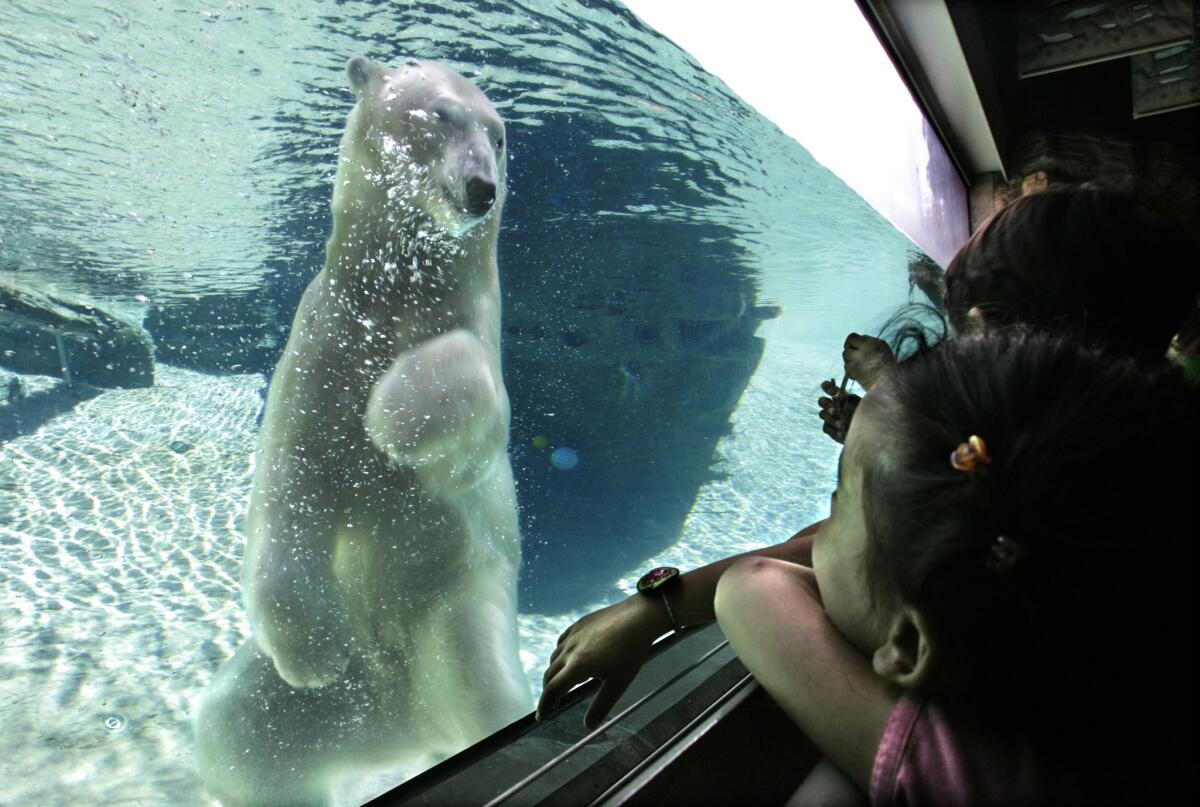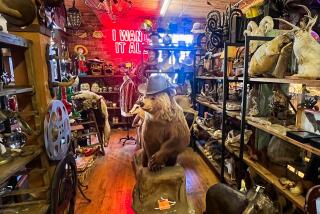16 centennials to celebrate around the world in 2016
Prepare for a big year of big centennials in 2016, including the National Park Service’s, which has already started to celebrate its 100-year milestone from coast to coast. There will be plenty of other events, people and places to celebrate in 1916 too. Here are 16 of my favorites — and some ideas about where to go to pay homage.
1. Boeing: If you’ve flown anywhere in the last 100 years, it’s likely Seattle-based aircraft manufacturer Boeing provided the wings and wheels. A century ago, the company was making single canvas-and-wood airplanes; now it’s cranking out luxurious Dreamliners. Mark the company’s milestone at the Future of Flight Aviation Center in Mukilteo, Wash., to see how 747s, 777s and 787 Dreamliners are put together. Tickets cost $16-$20 for adults.
Or check out a Boeing exhibition about the history of flight called “Above and Beyond” at the Smithsonian’s Air and Space Museum in Washington, D.C., through Jan. 3. It then moves to St. Louis, Seattle and the National Maritime Museum in Greenwich, England.
Info: Future of Flight Aviation Center, (425) 438-8100; “Above and Beyond,” aboveandbeyondexhibition.com/
2. Charlie Chaplin: Comic genius Charlie Chaplin was already making films in 1916, but it’s the contract with the Mutual Film Corp. in April of that year that led to silent comedies such as “The Pawnshop,” “The Rink,” “The Floorwalker” and “The Vagabond.” Chaplin became one of the highest-paid directors-actors in Hollywood with a salary of $670,000 for a single year’s work.
For those who want to celebrate the milestone, a long-delayed museum called Chaplin’s World is set to open in spring. Displays will be set up inside his 18th century mansion in Corsier-sur-Vevey, Switzerland, where he died in 1977 at the age of 88.
Info: Chaplin’s World, www.chaplinmuseum.com/en
3. Beverly Cleary: If you grew up reading about her characters Henry Huggins and Ramona, you must take a moment to celebrate children’s book author Beverly Cleary in 2016. She’ll turn 100 on April 12.
Cleary was raised in Yamhill, about 40 miles outside Portland in the Willamette Valley, but it’s the city that claims her as one of its own. Take a self-guided Walking With Ramona tour of the city in which you’ll pass one of her homes at 3340 N.E. Hancock St. and see statues of Ramona, Henry and Ribsy the dog. Pick up maps at the Hollywood Library in Portland or download descriptions and maps from the URL below.
Info: Beverly Cleary walking tour, www.lat.ms/1YguER8
4. Roald Dahl: The genius behind “Charlie and the Chocolate Factory” and “Matilda” would have notched his 100th year on Sept. 13. For 36 years, the author lived in Buckinghamshire, England, where a museum now bears his name. It’s geared to 6- to 12-year-olds, and you can drop in just about any day for a crafts project or a story.
And 2016 will see the release of another big-screen version of a Dahl novel. Director Steven Spielberg and screenwriter Melissa Mathison adapted “The BFG,” which tells the story of an orphan named Sophie who teams up with a “big, friendly giant” to rid the world of evil. It’s set to open in July.
Info: Roald Dahl Museum and Story Centre, Buckinghamshire, England, www.roalddahl.com/home/grown-ups
5. Queen Elizabeth ll: Britain’s longest-reigning monarch will be 10 years shy of a personal centennial in 2016, but we’ll spot her a decade to get her on the list. Though her birth date is April 21, the Queen’s 90th Birthday Celebration at Windsor Castle takes place May 12-15. It includes a splashy celebration with 900 horses, 1,500 participants, fireworks and video projections to create a 90-minute depiction of her life. The party will take place on the castle’s private grounds, which will be open to the public. (Tickets are sold out, but there may be an opportunity to attend a broadcast of the events on the grounds.)
Info: Queen’s 90th Birthday Celebration, www.hmq90.co.uk
6. Jackie Gleason: The actor was born Feb. 26, 1916. Though Gleason played many film and TV roles, none is more memorable than Ralph Kramden from the 1950s TV show “The Honeymooners.” The bus driver was everyman, and his struggles reflected those of working-class stiffs all over New York.
To pay homage to Gleason and his talent, snap a selfie at an 8-foot bronze statue of Kramden outside the city’s Port Authority Bus Terminal on Eighth Avenue.
Info: www.lat.ms/1Ylm4pu
7. Jack London: Adventure author Jack London died at his ranch in Glen Ellen, Calif., on Nov. 22, 1916. The author of “Call of the Wild” and “White Fang” bought the land in 1905, and by 1913 had acquired about 1,400 acres. It’s hard to think of him as a farmer with all his writings of the icy adventures in the Klondike and the Northwest Gold Rush.
Jack London State Historic Park preserves his home and his ranch. It has events planned all year to mark the 100 years since his passing. For starters, docent-led tours and hikes are available, and you also can take up the Klondike Challenge by logging 500 miles around the Bay Area (it’s a nod to London’s 500-mile trek into the Canadian Yukon).
Info: Jack London State Historic Park, (707) 938-5216, www.jacklondonpark.com
8. John D. Rockefeller: In 1916 John Davison Rockefeller, a young bookkeeper-turned-successful oil tycoon, became the world’s first billionaire. Adjusted for inflation, that’s equal to about $30 billion in today’s dollars.
No better place to see how Rockefeller lived than to visit his private residence, Kykuit, a 40-room house in New York’s Hudson River Valley. It was built between 1906 and 1913 and was turned over to the National Trust for Historic Preservation in 1979. Central Park designer Frederick Law Olmsted laid out the gardens that feature fountains and sculptures.
Several tours are offered — the home, the gardens and sculptures, the grand tour — and cost $25 to $40, depending on when you go. It’s open May to early November.
Info: Kykuit, www.hudsonvalley.org/historic-sites/kykuit
9. Ernest Shackleton: Did anything not happen to British explorer Ernest Shackleton on his 1914 polar expedition aboard the Endurance? When the ship got locked in ice and sank, he and the crew set out in lifeboats, eventually ending up on remote Elephant Island. Shackleton made a heroic voyage to South Georgia Island and then crossed the island on foot to find a whaling station where he could get help.
The rescue worked, but it took 22 months before he returned in August 1916 to reclaim his crew — all of whom were still alive.
You’ll have a rare opportunity to walk in Shackleton’s footsteps with polar adventurer Seb Coulthard next year on the Shackleton Centenary Voyage 2016 from Oct. 30 to Nov. 20.
The expedition visits the Falklands and Antarctica, but the highlight is the beyond-strenuous crossing of South Georgia Island on foot; just 12 spots are available. (For those not taking part, you’ll still hike around and visit the Stromness whaling station where the frostbitten and exhausted Shackleton arrived.) Prices for the expedition from $13,995 per person.
Info: Ice Tracks Expedition, www.lat.ms/1O5T8Nn
10. Augusta and Adeline Van Buren: The Van Buren sisters were socialites with something to prove: Women could do many things men could do, such as ride motorcycles and vote in elections. In 1916 the pair took off on a motorcycle adventure from New York City to San Francisco and rode into the history books as the first women to cross the continental U.S. on motorcycles.
To commemorate their big adventure, join the Sisters’ Centennial Motorcycle Ride from New York City to San Francisco, July 3-24, ride parts of the route (Carson City, Nev., to San Francisco, for example) and attend the grand finale party in San Francisco. Added bonus: Descendants of the sisters will participate in the ride too.
Info: Sisters’ Centennial Motorcycle Ride, sistersmotorcycleride.com
11. All that “jazz”: No one quite agrees on where the word “jazz” or “jass” comes from and when it was first used. But one thing is for sure: In 1916 a correspondent in New Orleans for Variety wrote of the burgeoning musical style: “‘Jazz Bands’ have been popular there for over two years.”
Tour company Tauck and filmmaker Ken Burns teamed up to design a five-day trip to Chicago that hits on highlights of the jazz era, Prohibition and the designs of Frank Lloyd Wright — all subjects Burns has explored in his documentaries. You’ll be immersed in the architecture, culture and political happenings in the city from 1871 to 1933, and Burns will present the keynote speech too. Prices start at $4,690 per person.
Info: Tauck Chicago Event, www.lat.ms/1mkLlPu

View of the front of the Piggly Wiggly store, located at 106 South Austin in the Austin community area, Chicago, Ill., 1926.
12. First modern grocery store: You can thank Clarence Saunders the next time you grab a shopping cart at your favorite grocery store. Saunders is the guy who “revolutionized” food shopping by getting rid of clerks. Instead he decided to let shoppers serve themselves as they cruised the aisles before heading to a checkout stand. Saunders’ first store, called Piggly Wiggly, opened on Sept. 6, 1916, at 79 Jefferson St. in Memphis, Tenn. The chain continues to this day.
To mark this centennial, head to the Pink Palace Museum in Memphis, which houses a replica of Saunders’ first self-service Piggly Wiggly. Tickets cost $7.25 for children and $12.75 for adults.
Info: Pink Palace Museums, www.memphismuseums.org/museum-overview/
13. Professional Golfers’ Assn.: Department store founder Rodman Wanamaker brought together a bunch of golf pros to form a club in 1916. The Professional Golfers’ Assn., or PGA of America as it’s more commonly known, was founded April 10 of that year and held its first championship in October. The championship matches for the next two years were canceled because of World War I, but golfing in America definitely caught on.
To celebrate, head to the World Golf Hall of Fame in St. Augustine, Fla., where a ticket gets you into the museum, a shot on the Hall of Fame Challenge Hole and an 18-hole round on a putting green. Tickets cost $19.50 for adults.
Info: World Golf Hall of Fame, www.worldgolfhalloffame.org
14. Pulitzer Prizes: Technically, the first Pulitzer Prizes weren’t awarded until 1917, but it was the 1916-17 board of directors, with members from the New York Times, the New York World (Joseph Pulitzer’s paper), the Chicago Daily News and the Boston Globe, among others, who would decide which journalists and writers would merit the award of excellence.
Many events this year will commemorate 100 years of these awards; stay tuned to www.pulitzer.org for event postings in January.
A good place to start your Pulitzer quest is at the Newseum in Washington, D.C. It has a Pulitzer Prize Photographs Gallery that features more than 1,000 winning journalists’ images that date to 1942. Tickets to the museum cost $22.95 for adults and $13.95 for children ages 7 to 18.
Info: Newseum, www.newseum.org

Visitors at the San Diego Zoo watch a polar bear swim in a glass walled tank.
15. San Diego Zoo: This year San Diego marked the centennial of the highly successful Panama-California Exposition in Balboa Park. To deal with the exotic animals left behind after the exposition ended, Dr. Harry Wegeforth and others created the Zoological Society of San Diego in October 1916. Among the first animals to arrive was a brown bear named Caesar, though it turns out he was a she. (You can read profiles of 100 of the zoo’s more famous animals at www.sandiegozoo100.org/100-animals.)
The zoo’s present-day site didn’t open until 1923, but it became a pioneer in cageless animal exhibits. Next year, check out the new history mural that tells the zoo’s story, a new film about the zoo’s conservation work worldwide, a new animal show and a Centennial Community Event at 6 p.m. May 14 where the public is invited to celebrate for free.
Info: San Diego Zoo 100 Years, www.sandiegozoo100.org
16. World War I: The centennial of the Great War in Europe began in 2014 and continues into next year. The Battle of Verdun, which began Feb. 21, 1916, and the Battle of the Somme, which began July 1, 1916, are among the key French battles that will be singled out for recognition and remembrance. (The U.S. did not enter the war until 1917.)
Travelers heading to Europe in 2016 may want to visit an expanded museum at the Verdun Memorial that’s set to open in February, and any number of museums on the Somme battlefields. A good online resource to map a tour is “A Guide to WW1 Battlefields and History of the First World War.”
Info: www.greatwar.co.uk
More to Read
Sign up for The Wild
We’ll help you find the best places to hike, bike and run, as well as the perfect silent spots for meditation and yoga.
You may occasionally receive promotional content from the Los Angeles Times.







